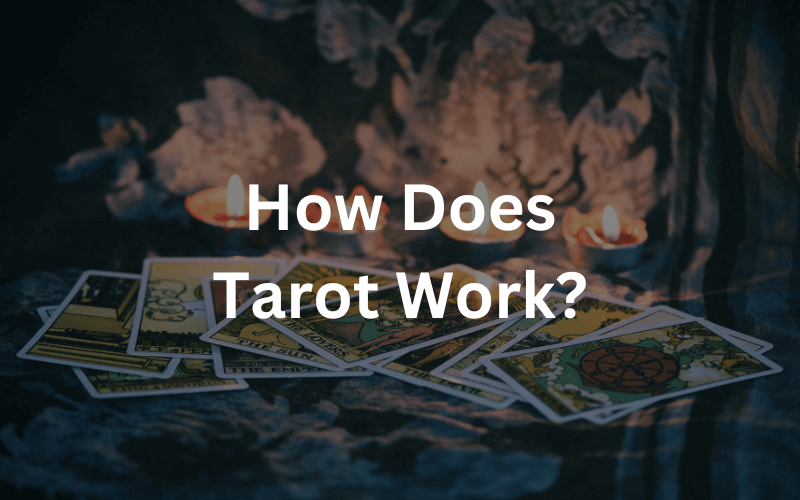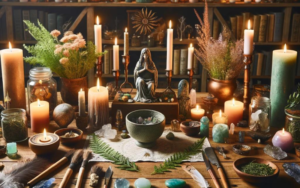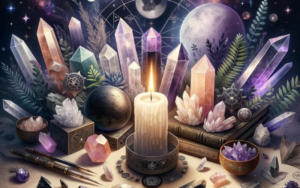Tarot cards are a fascinating tool that people have used for centuries, not to predict the future, but as a way to reflect on their lives and find guidance. Each card in a Tarot deck is filled with symbols and images that can help unlock our thoughts and feelings, offering insights we might not have considered.
In this article, we’re diving into the origins of Tarot, breaking down the elements of a Tarot deck, and explaining how these cards are used for personal insight. The magic of Tarot isn’t in foretelling exact future events, but in its ability to help us understand our own choices and paths.
As a Tarot reader and writer, I’ve seen how Tarot can be a mirror to our inner world, offering clarity and perspective. It’s a tool for self-discovery, helping us to navigate through life’s questions and challenges with a bit more wisdom. Whether you’re new to Tarot or looking to deepen your understanding, this article aims to shed light on how Tarot can be a meaningful part of your journey toward self-reflection. Let’s explore the rich tapestry of Tarot together.
Where did tarot originate from?
The history of Tarot goes back to the 15th century, initially appearing in Europe. These early Tarot cards were not mystical tools but were used for playing a variety of card games. It’s interesting to note that the use of Tarot cards for games is a practice that continues in some areas to this day.
Over time, the purpose of Tarot cards began to evolve. By the 18th century, their use had expanded beyond gaming into the realm of divination. This change didn’t happen all at once but occurred gradually. Influential figures, scholars, and occultists of the time began to see and promote the Tarot as a means for seeking wisdom, self-reflection, and predictions. This was a significant shift from their original, more recreational use.
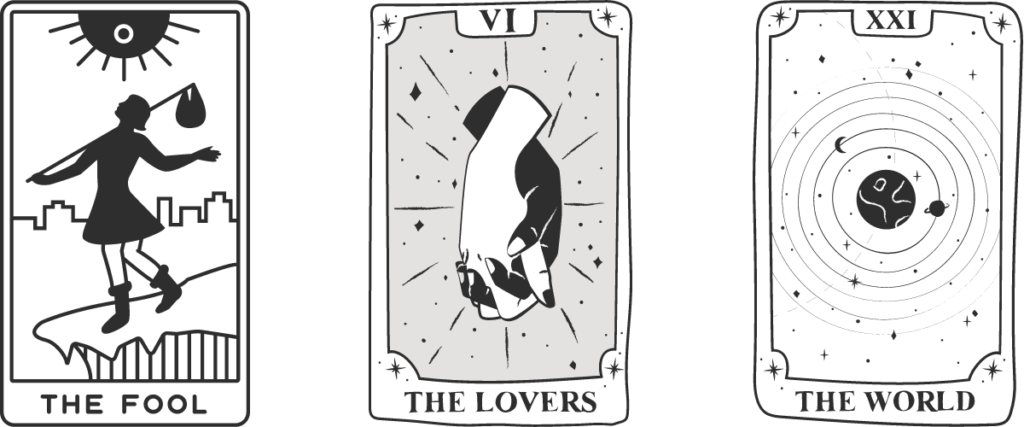
Key historical milestones that contributed to Tarot’s popularity and its association with the mystical include its adoption by members of the occult and its feature in various works of literature and philosophy. These elements helped to cement the Tarot’s place in popular culture as a tool for divination. As such, the Tarot deck as we know it today, with its complex symbols and meanings, was born from a combination of historical uses, evolving over centuries from simple card games to a profound method for personal guidance and insight.
A Tarot deck is made up of 78 cards, divided into two main categories: the Major Arcana and the Minor Arcana. This structure is fundamental to the deck’s ability to offer insight and guidance.
Major Arcana
The Major Arcana consists of 22 cards that represent significant life themes and lessons. These cards are considered the heart of a Tarot deck, reflecting major events and decisions that shape our journey through life. Each card, from The Fool to The World, symbolizes a step in an individual’s path, embodying the spiritual and karmic lessons that guide personal growth and understanding.
Minor Arcana
The Minor Arcana, on the other hand, includes 56 cards that represent the more everyday aspects of life. These cards are split into four suits: Cups, Pentacles, Swords, and Wands, each corresponding to a different element of human experience. Cups are connected to emotions and relationships, reflecting our feelings and connections with others. Pentacles deal with material aspects, such as work and finances, indicating our physical and financial realities. Swords are linked to intellect and conflict, representing our thoughts, words, and struggles. Lastly, Wands are associated with creativity and action, highlighting our ambitions, ideas, and the energy we put into achieving our goals.
Together, the Major and Minor Arcana of a Tarot deck offer a comprehensive reflection of human life, from the grandiose themes of existence and spiritual growth to the day-to-day experiences and challenges we face. This structure allows Tarot readings to cover a broad spectrum of human experiences, providing guidance, reflection, and insight into the complexities of life and the human psyche.
Preparation for a Tarot Reading:
The process of a Tarot reading begins well before the cards are laid out. Preparation involves three key elements: the setting, the question, and the mindset. Creating a calm and respectful setting is crucial; it can be anywhere that feels safe and quiet, allowing for focus and introspection. The question should be clear but open-ended, framed in a way that invites deep reflection rather than a yes or no answer. Finally, the mindset of both the reader and the querent (the one asking the question) should be open and receptive, approaching the reading with curiosity and a willingness to explore the insights the cards may offer.
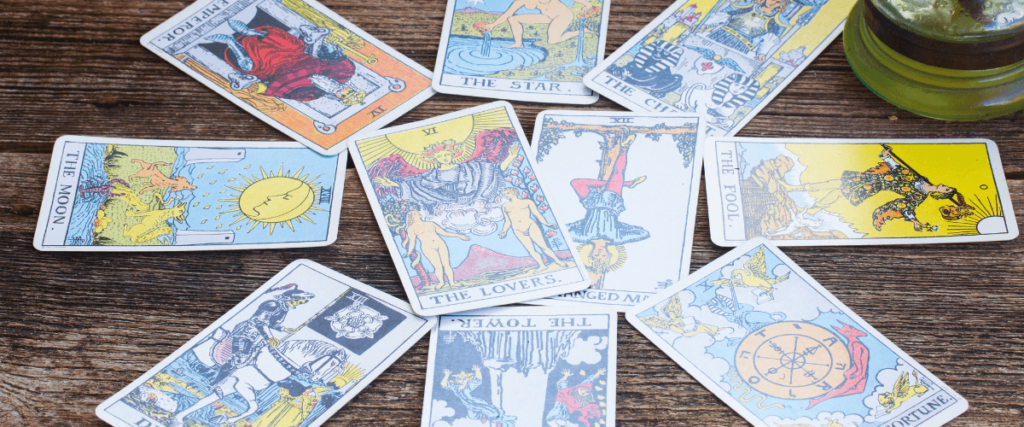
Common Tarot Spreads:
Tarot spreads are specific arrangements of cards, each with its own structure and purpose. The most basic is the Three-Card Spread, representing past, present, and future, providing a simple yet profound overview of the querent’s journey or situation. The Celtic Cross is another popular spread, more complex, offering a deep dive into the querent’s life and challenges by examining various aspects such as potential outcomes, external influences, and underlying feelings.
Intuition and Interpretation:
The heart of a Tarot reading lies in the interpretation of the cards drawn. This is where intuition plays a key role. Each card has traditional meanings, but the reader’s intuitive understanding of how these meanings relate to the querent’s question or situation brings the reading to life. It’s about making connections between the symbols on the cards, the question posed, and the unique circumstances of the querent. This process is not about predicting a fixed future but offering perspectives and insights based on the current trajectory as depicted by the cards.
In essence, a Tarot reading combines preparation, specific spreads, and intuitive interpretation to create a reflective experience. This allows the querent to explore different dimensions of their situation, potentially revealing underlying patterns, challenges, and opportunities for growth.
Selecting a Tarot Deck and Starting the Journey:
Choosing a Tarot deck is an essential first step. Beginners are encouraged to select a deck that resonates with them aesthetically and emotionally. There are countless decks available, each with its own artistic style and symbolism. Take your time exploring different options until you find one that speaks to you on a personal level. This is the one that I use. Once you have your deck, begin familiarizing yourself with the cards, their meanings, and their symbolism. Practice simple readings for yourself or friends to get comfortable with the cards and their interpretations.
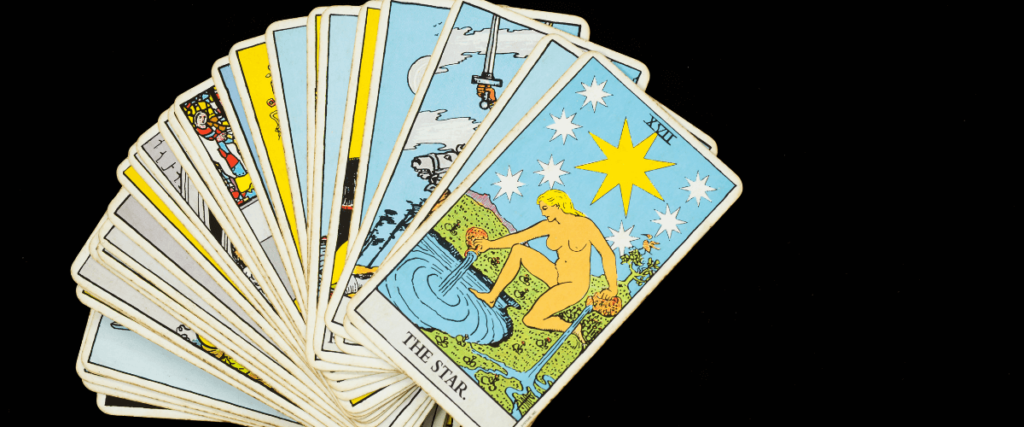
Keeping an Open Mind and Using Tarot for Personal Growth:
It’s crucial for beginners to approach Tarot with an open mind and a spirit of curiosity. Tarot is not about fortune-telling or predicting the future with certainty; rather, it’s a tool for self-reflection and personal insight. Encourage beginners to embrace the process of exploration and discovery, allowing the cards to spark new perspectives and deeper understanding. Remember, the power of Tarot lies in its ability to illuminate our inner truths and guide us on our journey of self-discovery.
Resources for Learning More about Tarot:
For those eager to delve deeper into the world of Tarot, there are numerous resources available. Books such as “The Tarot Bible” by Sarah Bartlett or “The Ultimate Guide to Tarot” by Liz Dean provide comprehensive introductions to Tarot history, symbolism, and interpretation. Online courses and workshops offer interactive learning experiences tailored to beginners, providing guidance on everything from card meanings to reading techniques. Additionally, online communities and forums provide opportunities to connect with fellow Tarot enthusiasts, share insights, and seek advice from more experienced practitioners.
By selecting the right deck, maintaining an open mind, and utilizing available resources, beginners can embark on a rewarding journey into the world of Tarot, unlocking new insights and perspectives along the way. Remember, Tarot is a tool for empowerment and self-discovery, offering guidance and illumination as we navigate life’s twists and turns.
Recap of Tarot’s Significance:
In summary, Tarot stands as a timeless tool for guidance and self-reflection, with roots that stretch back through the annals of history. From its humble beginnings as a deck of playing cards to its evolution into a powerful instrument for divination and introspection, Tarot has captivated the hearts and minds of countless individuals across the globe. Its enduring appeal lies in its ability to offer insights into our lives, illuminate our paths, and empower us to make informed decisions.
Encouragement for Readers:
As you embark on your journey with Tarot, I encourage you to approach it with curiosity and reverence for its rich tradition and potential for personal insight. Allow yourself to explore the mysteries of the cards with an open heart and mind, embracing the wisdom they offer as you navigate the complexities of life. Remember that Tarot is not about finding definitive answers or predicting the future, but rather about uncovering deeper truths and accessing your own inner wisdom.
If you’re eager to deepen your understanding of Tarot and unlock its transformative potential, I invite you to enroll in a Tarot course. Whether you’re a beginner seeking to learn the basics or a seasoned practitioner looking to expand your knowledge, a Tarot course can provide invaluable guidance and support on your journey. Take the next step toward mastering the art of Tarot and discovering the profound insights it holds for you.
In conclusion, may your exploration of Tarot be filled with wonder, enlightenment, and growth. Embrace the magic of the cards and trust in the wisdom they reveal as you continue your quest for self-discovery and personal transformation.
If you enjoyed this article please check out: How to Use Everyday Herbs to Attract Wealth and Prosperity


